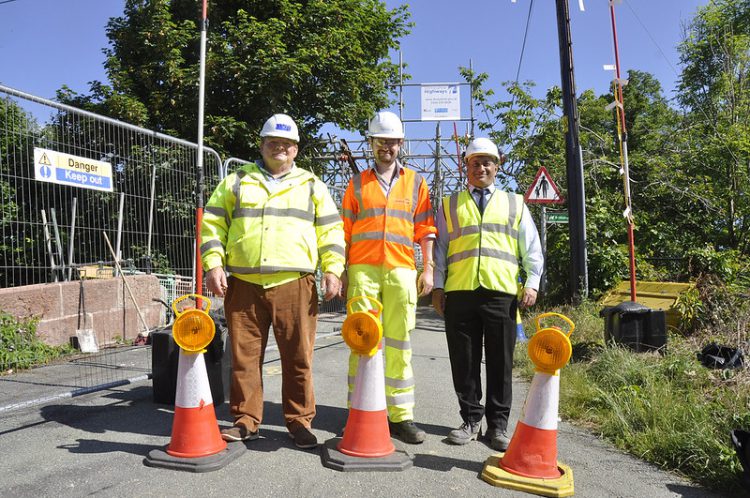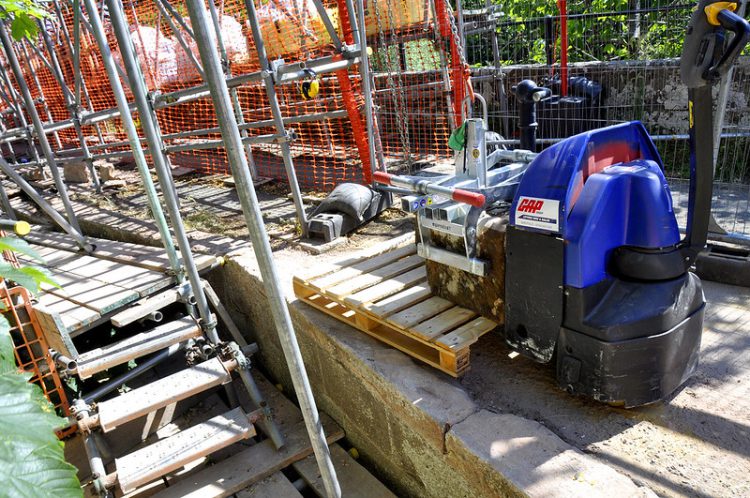Repairs to Llanyblodwel Bridge underway following vehicle strike

Councillors Vince Hunt and Dean Carroll with bridges manager Gurnek Singh on Llanyblodwel Bridge
Repairs are being made to Llanyblodwel Bridge, following a vehicle strike in July 2021 which caused significant structural damage to the parapets and spandrel walls and saw the bridge closed to vehicular traffic.
Work – which is being carried out by Shropshire Council and its contractor Kier – began on 4 May 2022 and is expected to take 16 weeks to complete.
For more information about the work, please see this short video:
Dean Carroll, Shropshire Council’s Cabinet member for highways, said
“There’s an awful lot of work to be done to this bridge and it has to be done sensitively as it is a scheduled ancient monument, so it takes a little more time than you would usually expect. But we have to get everything absolutely right for this bridge as it’s a really important heritage asset for the local community, and the county as a whole.
“So, please bear with us during the disruption and we’ll get the bridge open as soon as possible.”

Repair work on Llanyblodwel Bridge
Vince Hunt, Shropshire Councillor for Llanymynech, said
“We’re hoping to get this bridge back into a good state of repair by September.
“It’s a very important thing, this bridge, to the community. They’ve been having to take single track roads on an eight mile detour, part of which goes through Powys, for the last six months or so.
“I want to say a big thank to you to Dean Carroll, on behalf of myself and the local community for coming to see the repair work being carried out.”
The work is being carried out this summer – and was unable to be carried out sooner – for a number of reasons.
The work has required Scheduled Ancient Monument (SAM) statutory consent from the Department for Culture, Media and Sport (DCMS) – which is delegated to Historic England.
And, as the work is over a main river, drainage consent from the Environment Agency had to be obtained to allow scaffolding to be installed in and over the river, to provide a working platform and edge protection for the workmen.
In addition, the council needed to procure additional stone to replace damaged stone, and this had long lead-in periods of up to 12 weeks.
Finally, because lime mortar is being used, it wasn’t possible to undertake any work in the colder months as lime mortar is susceptible to frost damage.

